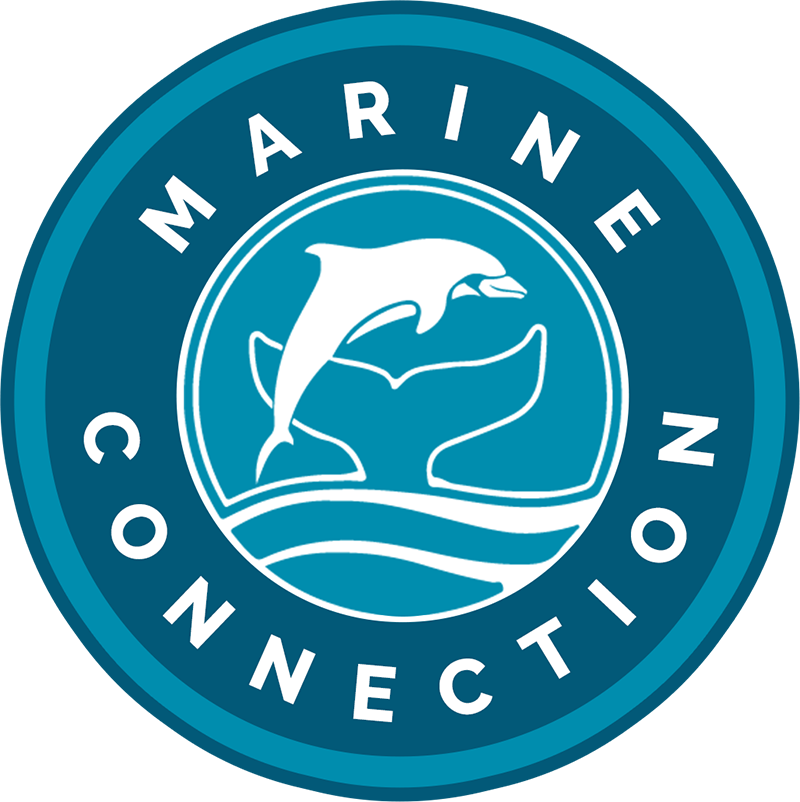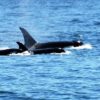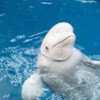Just like humans, cetaceans can find themselves alone from time to time. This can be for a variety of reasons, such as becoming displaced/separated from their pod or simply choosing to live solitary for a while. Being solitary itself isn’t a problem. Solitary cetaceans should not be seen as an unusual occurrence within the cetacean realm, or indeed amongst social mammalian species as a whole, however, their occurrence across the world has led to many management difficulties of the situations which surround them – and it would appear that these unique individuals are on the increase.
As our Lone Rangers report describes, solitary animals become habituated to human contact in 4 stages:


Stage 1: Exploring a New Home Range
Cetacean appears in and begins to explore a new home range, occasionally following and/or inspecting boats but keeping distance from humans
Stage 2: Curiosity Increases
As the cetacean gets used to its new surroundings, it may start to follow boats more regularly, inspecting gear and bow riding
Stage 3: Familiarity Builds
The cetacean’s confidence grows to include limited human interaction, which may include physical contact and aerial behaviour
Stage 4: Interactions Become Dangerous
Celebrity and tourist attraction status leads to increased, often forced interactions by humans, resulting in the animal displaying dominant, aggressive and sexual behaviour
To further understand the solitary individual, the process through which it becomes a sociable cetacean has been classified, these habituation stages are highlighted in the Marine Connection solitary cetacean report *Lone Rangers
When wild dolphins or whales become habituated
As humans we all possess unique characteristics and behavioural attitudes, which are shaped by past experiences and encounters – so is this the same for cetaceans? Can the sequence of events leading up to them becoming solitary shape their behaviour. Whilst it is understandable that people want to get closer to these marine mammals when they appear close to shore, many are unaware of the consequences that swimming with solitary wild dolphins or whales has on the individual animal. Read the case of Izzy – a female solitary bottlenose dolphin who having been rescued now faces a lifetime in captivity solely due to humans and their unwillingness to leave her alone in the wild.
Marine Connection recognises the dangers of increased interactions with solitary cetaceans and works hard to prevent them.
What we do
With human-cetacean interactions on the rise, Marine Connection is dedicated to:
- Monitoring solitary cetaceans to learn more about their behaviour
- Working closely with local authorities, providing guidance and support when a solitary cetacean appears in an area
- Publishing reports on findings and research
- Providing a tailored action plan for each individual solitary animal, to afford them greater protection whilst they remain in the area
- Encouraging the reporting of solitary cetacean sightings to further our understanding of their behaviour
- Educating the public and the media on solitary cetaceans
Thanks to your support, we’ve been able to:
Document solitary bottlenose dolphin Clet across many regions, compiling an invaluable catalogue of sightings, photographs and behaviours.
Create and publish our Lone Rangers report on solitary dolphins and whales, which includes recommendations for their protection.
Offer guidance and education to the public in the form of posters and flyers, on how to respect and safely observe solitary/social cetaceans to ensure their welfare.
But we must do more
HOW YOU CAN HELP PROTECT VULNERABLE SOLITARY CETACEANS
Read and share our poster on how to safely and respectfully handle an encounter with these majestic marine mammals.
If you have seen a solitary dolphin, porpoise or whale in your area, please get in touch with details of the sighting as these are important to our work.





